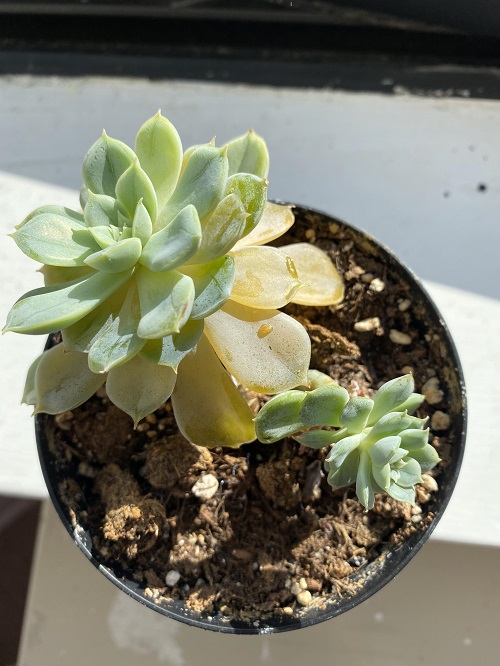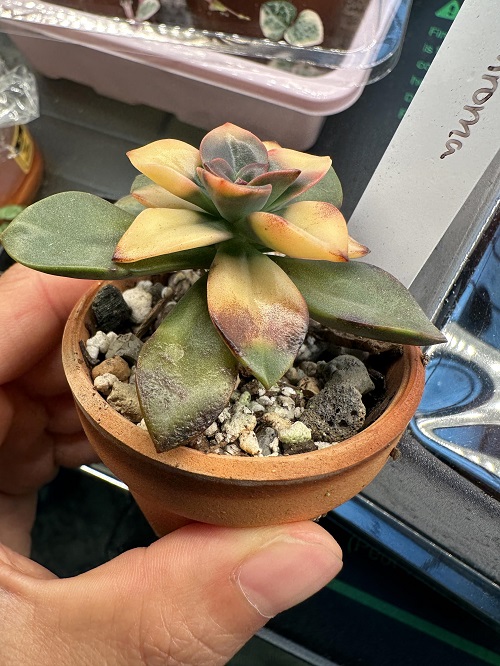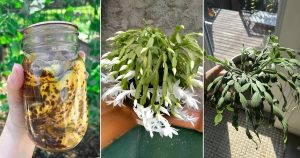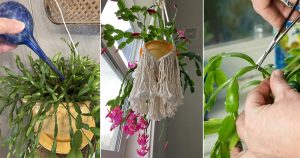If you are wondering “Why are my succulent leaves turning yellow?” So, these reasons along with their solutions will help you out!
The answer to Why are your succulent leaves turning yellow is simple. Yellowness on succulent plants can be a sign of several problems, from overwatering to pest infestation. In this article, we will let you know all the reasons behind this problem and we will also talk about the ways on how to revive a succulent. Let’s start!
Succulent Leaves Turning Yellow
1. Overwatering
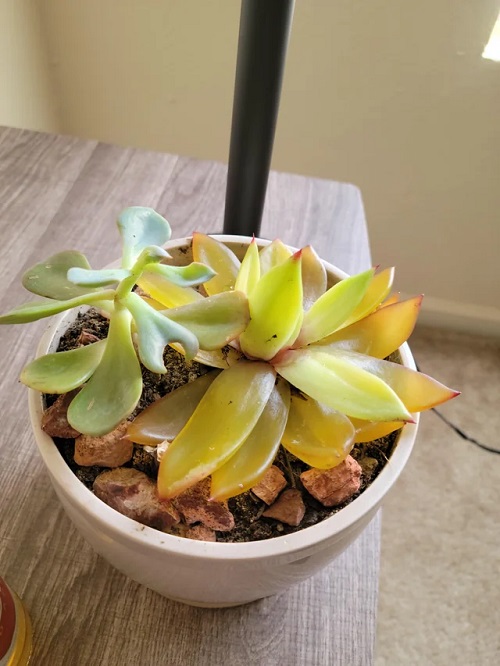
One of the most common reasons for yellowing leaves is overwatering. Succulents are designed to thrive in arid environments with thick, fleshy leaves that store water. When they get too much water, their roots can become waterlogged and start to rot. So, this rot spreads to the leaves, causing them to turn yellow and become mushy.
To fix this, let the soil dry out completely before watering again. You might need to water your succulents only once every few weeks, depending on your environment’s humidity and temperature. When you do water, make sure to water deeply until it drains out of the bottom of the pot. And, you should discard any excess water to prevent the roots from sitting in it, which can cause further rot.
2. Underwatering
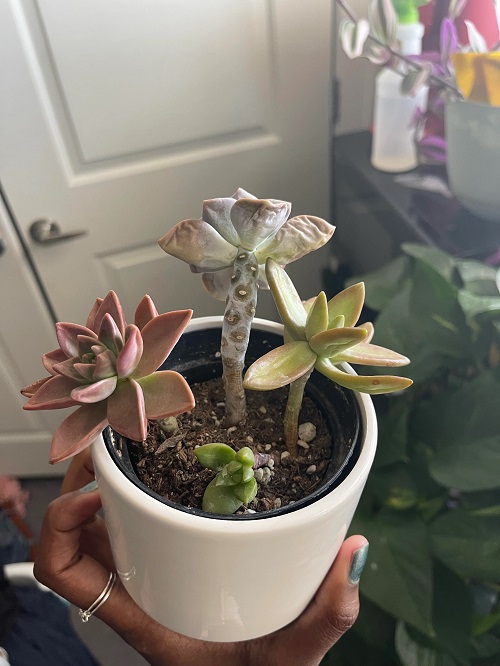
Underwatering can also cause yellow leaves. When succulents don’t get enough water, they start to use the water stored in their leaves to survive. This makes the leaves shrivel, turn yellow, and eventually die.
Then, to solve this problem, water your succulent thoroughly when the soil is completely dry. Plus, make sure the water penetrates all the way through the soil so the roots can absorb it. Consistent but not excessive watering will help bring your underwatered succulent back to health.
3. Lighting
Succulents need plenty of light to thrive, ideally about six hours of direct sunlight each day. Without enough light, they can’t properly photosynthesize, and their leaves can turn yellow. They might also grow leggy, stretching towards the nearest light source.
You can fix this issue by moving your succulent to a brighter location. A south-facing window is usually good for indoor succulents. If natural light isn’t enough, consider using a grow light to supplement their light needs, Simple!. This will help your succulent regain its actual color and compact shape.
But, too much direct sunlight, especially during the hottest part of the day, can also harm succulents. They can get sunburned, which shows up as white or yellow patches on the leaves.
Precaution: If you notice sunburn, move your succulent to a spot where it will get indirect light or partial shade during the hottest parts of the day. You can also use a sheer curtain to diffuse the light and protect your plant from intense sun.
4. Extreme Cold
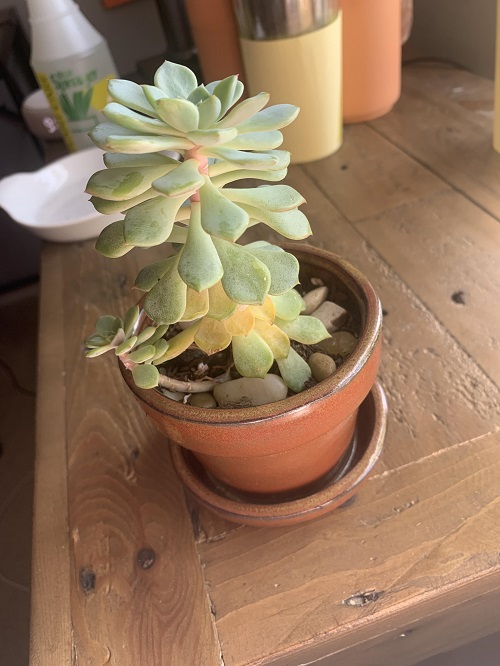
Succulents aren’t usually cold-hardy and can get damaged when exposed to temperatures below 40°F (5°C). Prolonged exposure to cold can cause their leaves to turn yellow, become mushy, and fall off.
If your succulent has been exposed to extreme cold, move it to a warmer location immediately. Room temperature, around 65-85°F (18-30°C), is perfect. You have to keep it away from cold drafts and windows during the winter. Plus, allow the soil to dry out completely before watering again, as wet soil combined with cold temperatures can be particularly harmful.
Wait about a week before pruning any damaged leaves. This gives the plant time to stabilize and start recovering from the cold stress. Once it shows signs of new growth, you can continue your regular care routine.
5. Pests
Pests like spider mites, mealybugs, and scale insects can attack succulents, draining sap from the leaves and causing them to yellow. These pests are often more common on weakened or stressed plants.
To treat pest infestations, inspect your plant regularly for signs of pests. If you find any, isolate the affected plant to prevent the pests from spreading. You can use neem oil or insecticidal soap to treat the infestation, following the product instructions. Repeat treatments might be necessary to completely get rid of the pests.
6. Wrong Soil/Potting Mix
Succulents need well-draining soil to prevent root rot. And, regular potting soil holds too much moisture, which can lead to yellow leaves and root problems.
You can repot your succulent using a cactus or succulent-specific soil mix. These mixes drain quickly, preventing water from sitting around the roots. If you prefer to make your own mix, combine regular potting soil with coarse sand, perlite, or pumice to improve drainage. You have to be very sure that your pot has drainage holes to allow excess water to escape.
7. Nutrient Deficiency
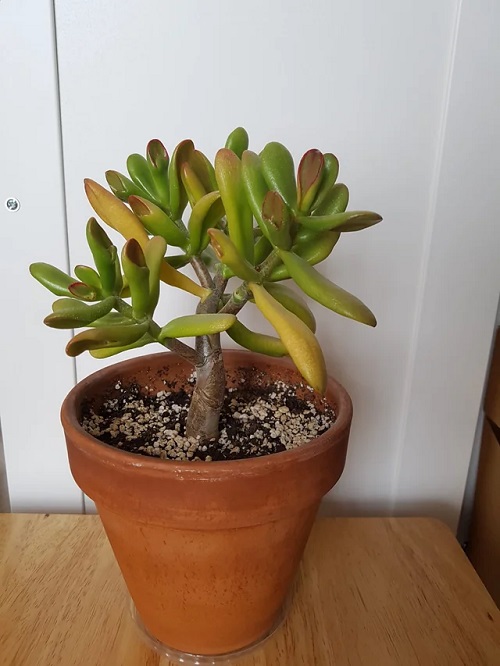
While succulents don’t need a lot of nutrients, they still require some to stay healthy. A lack of essential nutrients, like nitrogen, can cause leaves to turn yellow and appear thin and weak.
You can solve this nutrient deficiency problem by feeding your succulent with a balanced, diluted fertilizer during the growing season, usually spring and summer. Use a fertilizer specifically formulated for succulents or cacti, as these have the right nutrient balance. Be careful not to over-fertilize, as this can cause root burn and other problems.
8. Age of the Plant
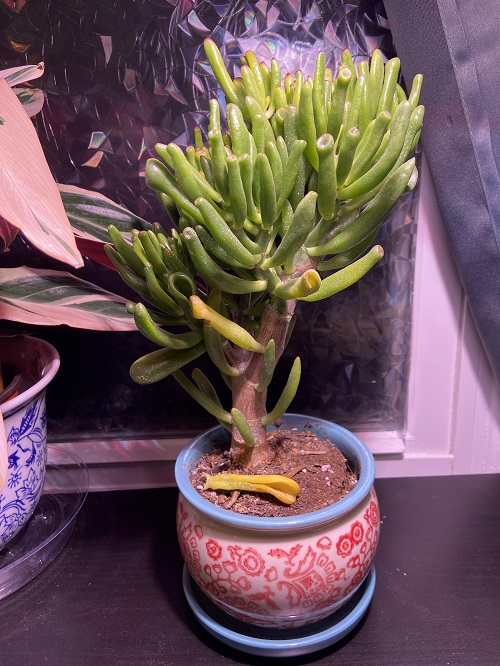
As succulents grow, it’s natural for the older leaves at the base to turn yellow and die off. This is a normal part of the plant’s life cycle and isn’t usually a cause for concern.
To manage this, simply remove the yellow leaves as they appear. This helps keep your plant looking tidy and healthy. It also prevents the build-up of dead plant material, which can attract pests or mold.
Conclusion
Succulent leaves turning yellow can be a sign of many issues, from improper watering to pest infestations. By understanding the underlying causes and taking appropriate actions, you can restore your succulent to its healthy state.
Feel free to share your experiences and comments below. We’d love to hear how you’ve managed to keep your succulents thriving!

